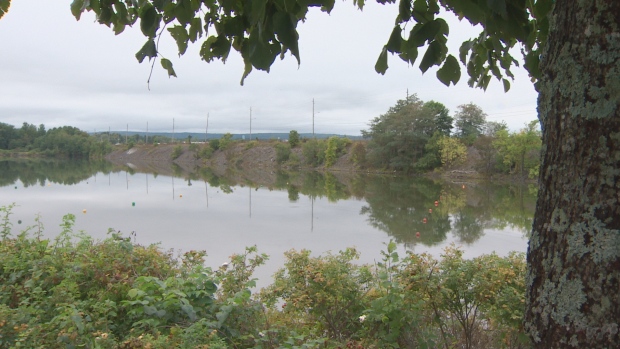KJIPUKTUK (Halifax) – Some citizens feel disenfranchised as the Town of Windsor and the Municipality of West Hants are reviewing a project that would see the Highway 101 twinned where it crosses the causeway that divides the Avon River from the Minas Basin. These folks believe that this is the time to replace at least part of the causeway with a bridge.
What’s more, they don’t feel the municipalities want to hear from them.
At its last meeting in July only proponents of the causeway approach addressed a joint meeting of the Municipality of West Hants and the Town of Windsor, they charge. At issue are the ability of fish, in particular of endangered salmon, to enter the Avon River, and the need to fully understand the repercussions of either a causeway or a bridge-based solution.

Darren Porter is a local fisher who wanted to address tonight’s joint council meeting to provide additional information. Porter is involved in a fish count along the causeway sponsored by the department of Transportation and Infrastructure (TIR) and the federal department of Fisheries (DFO).
“I realized they had a sales pitch, and were using fear tactics, and all speakers were focused on selling it,” says Porter, a strong proponent of improving fish access to the Avon River. “So I wrote a letter that I and other parties, in particular DFO as a federal regulator, be able to explain the situation, because things aren’t as black and white as so-called experts painted them.”
As things stand right now, Porter will not get that opportunity, at least not tonight.
The project has received provincial environmental approval with the causeway remaining in place, and the method of fish access to be determined later. The joint council meetings offer an opportunity for the two affected municipal units to better understand the consequences of this approach, but at this stage the municipalities can only issue recommendations and ask questions.
But asking questions is still a useful exercise, says West Hants councillor Kathie Monroe.
At the last Joint Council meeting Monroe tabled a resolution recommending further study to better understand the pros and cons of maintaining the causeway versus returning the river to an unencumbered flow. That resolution was defeated.
“This is not an attempt to be disruptive in any way, this is purely trying to get past the point of not understanding what is going to happen,” Monroe tells the Nova Scotia Advocate.
“In its day, 47 years ago, a causeway was the cheap and easy way of spanning water, and it was an accepted solution. The question I continue to ask is, what if there were a bridge there today, and we’d suggest to rip that bridge out and replace it with a causeway, would that be acceptable? They wouldn’t answer, but I know the answer is no. That bothers me,” Monroe says.
Louis Coutinho, CAO of the Town of Windsor, tells the Nova Scotia Advocate that the joint council meeting had a specific agenda and was not a public hearing.
“The ministers of Environment and and Transportation gave us a notice that the Environmental Assessment was completed and that the process was cleared. So Joint Council asked for a presentation from TIR and the CLC, on where the twinning of the 101 stood,” Coutinho says.
Citizens can present to the Windsor Council at any time, he adds, and if a public meeting were to be called he would be obliged to invite everybody affected to speak.
Furthermore, since the design of the fish passage has not yet been specified any presentation by Darren Porter would be premature, Coutinho says.
Porter takes issue with the suggestion that what he wanted to speak to was merely about design of a fish passage, and remains disappointed that he wasn’t given an opportunity to address joint council.
“At the end of the day they’re blocking anything that isn’t their vision,” Porter says. “They’re definitely moving too fast.”
If you can, please support the Nova Scotia Advocate so that it can continue to cover issues such as poverty, racism, exclusion, workers’ rights and the environment in Nova Scotia. A pay wall is not an option, since it would exclude many readers who don’t have any disposable income at all. We rely entirely on one-time donations and a tiny but mighty group of dedicated monthly sustainers.



